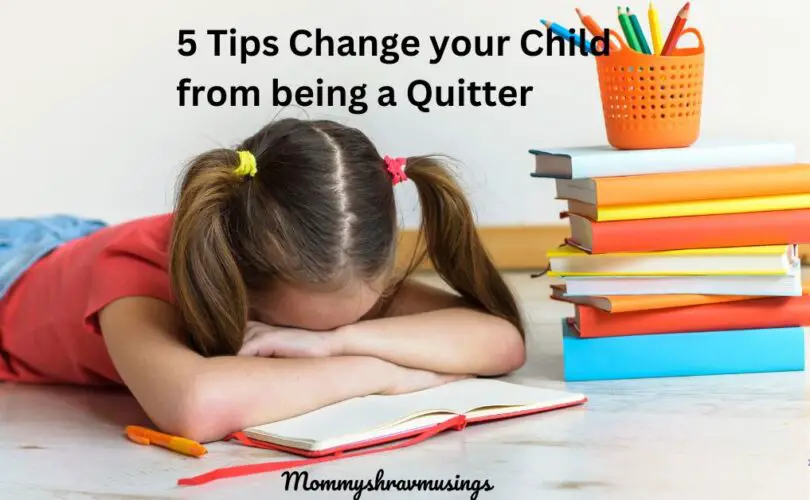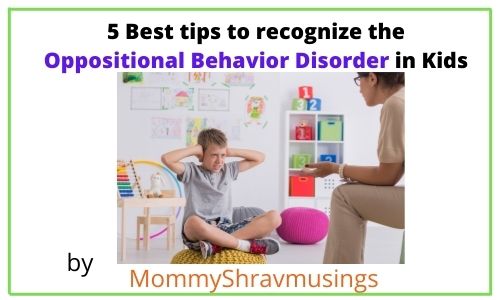How to Change Your Child from Being a Quitter: Building Resilience and Perseverance
Most of you would have seen your children leave some activity without completion. Have you ever wondered if it is because he doesn’t want to concentrate or if it is because he doesn’t know how to solve the problem or ask for help to resolve the issue? If the child has just lost interest in that activity after trying for some time, it’s okay. But if he has encountered a problem and left it, he is developing the habit of quitting. As parents, we should be wary of these traits and ensure that our child doesn’t grow up being a quitter. This blog concentrates on the same issue and gives some practical tips to change your child from being a quitter.
Why do Children Quit from Activities or Tasks:
Children may quit activities or tasks for various reasons, and understanding these reasons can help parents and caregivers address the underlying issues. Here are some common reasons why children may quit:
1. Fear of Failure:
Most of the time, children always want to satisfy or please their parents, their primary caregivers. The fear of not meeting expectations or disappointing others can be overwhelming, leading them to avoid challenging situations altogether. Children may quit when they’re afraid of failing or making mistakes.

2. Low Self-Esteem:
Children with low self-esteem or confidence may be more likely to quit when faced with difficulties. They may doubt their abilities to succeed and feel discouraged by setbacks.
3. Overwhelming pressure:
Excessive pressure from parents, teachers, or peers to excel in a particular activity can overwhelm children. They may feel stressed and anxious about meeting others’ expectations, leading them to quit to relieve the pressure.
4. Lack of interest or enjoyment:
Children may quit activities that they no longer find interesting or enjoyable. They may lose motivation to continue participating if they’re not passionate about the activity or don’t see its value.
5. Burnout:
Overloading children with too many activities or demanding schedules can lead to burnout, making them physically and emotionally exhausted. Burnout can cause children to lose interest in activities they once enjoyed and may lead them to quit altogether.
This is how you can start teaching Emotional Resilience to your children.
6. Lack of support:
Children need support and encouragement from parents, teachers, and coaches to persevere through challenges. They may lose motivation and quit if they don’t feel supported or receive negative feedback or criticism.
7. Undiagnosed learning or developmental challenges:
Children with undiagnosed learning disabilities, ADHD, or other developmental challenges may struggle to keep up with their peers in certain activities. Without pr per support and accommodations, they may feel frustrated and discouraged, leading them to quit.
We need to understand the underlying reasons before we stop our children from quitting. Once we know them, we can take the required proactive steps to address these issues and prevent our child from being a quitter.
Tips to Change Your Child from being a Quitter:
Helping your child develop resilience and perseverance is essential for overcoming the tendency to quit easily. Here are some tips from my personal experience with my niece, Emily:
My niece Emily is a natural artist. At a tender age, she used to spend hours together sketching or painting. However, Emily had a tendency to get frustrated easily, especially when her drawings didn’t turn out the way she wanted them to or if someone commented negatively on her drawings.
Victim of Self-Doubts:
Last month, Emily decided to participate in an art competition at her school. She worked hard on her drawing for weeks, pouring her heart and soul into every detail. But when the day of the competition arrived, Emily’s nerves got the best of her. As she looked around at the other students’ impressive artworks, doubt crept into her mind. What if her drawing wasn’t good enough? What if she embarrassed herself in front of everyone?

Positive Attitude and Perseverance clears the Self-Doubt:
Feeling overwhelmed, Emily was tempted to give up and leave the competition before it began. Then she spoke to her parents and recalled how they showed her that there would be a positive light behind every worry or self-doubt. Even when things don’t go as planned, by remaining optimistic, one can find solutions to the problem rather than dwelling on it. They were good role models for her, exhibiting perseverance and working tirelessly towards their goals.
Drawing on the skills she had learned from her parents, Emily decided to approach the competition with a growth mindset. A mindset that values learning and improvement over winning or losing. Rather than viewing the competition as a test of her worth or abilities, Emily saw it as an opportunity to challenge herself and grow as an artist.
She reminded herself that even if she didn’t win, the experience itself was valuable. By participating in the competition, she would have the chance to learn from other artists, receive feedback on her work, and identify areas for improvement. Each brush stroke and detail she added to her drawing was an opportunity to learn and grow, regardless of the outcome. She reminded herself that even if she didn’t win, she could still be proud of the effort she had put in.
Setting realistic expectations:
With this mindset, Emily shifted her focus away from the pressure to succeed and towards the joy of creating art. Instead of worrying about how others would judge her drawing, she focused on expressing herself and exploring her creativity to the fullest. She embraced the process of making art as a journey of self-discovery and self-expression, finding fulfillment in the act of creation itself. Without the weight of expectations holding her back, she felt more open to experimentation and risk-taking. She tried new techniques, explored different styles, and allowed her imagination to soar without fear of failure.
Here are some peaceful parenting tips for you to reduce the anger in your children.
Parental Support and Guidance:
Throughout the competition, Emily encountered numerous challenges and setbacks that tested her resolve and determination. There were moments when she struggled to capture certain details in her drawing, and doubts crept into her mind about whether she could meet her own expectations.
But each time Emily faced adversity, she found strength and solace in her parents’ unwavering support and encouragement. They assured her that setbacks were a natural part of the learning process and that even the most skilled artists faced challenges along the way.
Providing Right and Supportive Environment:
Emily’s parents understood the importance of creating a nurturing atmosphere where she felt safe to explore and make mistakes. Instead of criticizing Emily for her errors or shortcomings, they offered constructive feedback and encouragement to help her improve.
In Emily’s home, taking risks and trying new things were not only encouraged but celebrated. Whether she was experimenting with a new art technique or pursuing a different hobby, Emily knew that she had her parents’ full support. They cheered her on every step of the way, celebrating her successes and comforting her during moments of frustration.

Teaching Self-Regulation Skills:
Emily’s parents regularly practice mindfulness and meditation techniques at home and include Emily also in their activities. That way, she learned various techniques for calming herself down when frustrated or overwhelmed. They encouraged her to take deep breaths, practice mindfulness, and use positive self-talk to reframe negative thoughts. They also helped her identify her triggers and develop coping strategies to manage her emotions more effectively.
For example, when Emily encountered a setback in her drawing during the competition, she felt a surge of frustration and disappointment. Instead of letting her emotions overwhelm her, Emily remembered the techniques her parents had taught her. She took a few deep breaths to calm herself down, reminded herself that mistakes were part of the learning process, and focused on finding a solution to the problem.
Change your Child from being a Quitter
Instead of viewing setbacks as failures, her parents encouraged her to see them as opportunities for growth and learning. Their word of encouragement echoed in her mind as she persevered through the competition, pushing herself to do her best and never giving up on her dreams.
Emily persevered through the competition with their guidance, pushing past her doubts and fears. When the winners were announced, Emily’s name was among them. But more importantly, Emily felt a sense of pride and accomplishment knowing that she had faced her fears and refused to give up.
Here are some affirmations to improve your child’s self-esteem and confidence.
As she looked back on her journey, Emily knew that she owed much of her success to the unwavering belief and support of her parents, who had taught her that with perseverance and determination, anything was possible. In fact, her parents have changed her mindset completely, and they have changed her from being a quitter to an achiever.
Reflecting on her own experiences, Emily realized that the reasons children quit were often rooted in fear, self-doubt, and a lack of support. Some children, like herself, feared failure and lacked confidence in their abilities. Others may have struggled to find enjoyment in activities that didn’t resonate with their interests or passions. Still, others may have been overwhelmed by the pressure to excel or the expectations of others.
Parting Thoughts:
In conclusion, helping your child overcome the tendency to quit easily and fostering a resilient mindset is a journey that requires patience, understanding, and support. By modeling resilience, cultivating a growth mindset, and providing unwavering support, parents can empower their children to face challenges head-on and persevere through adversity.
Change doesn’t happen overnight, but with consistent effort and encouragement, you can make a positive difference in your child’s life. Together, you can nurture a mindset that embraces challenges as opportunities for growth and learning and, ultimately, change your child from being a quitter to a resilient individual who faces life’s challenges with courage and determination.
QOTD: Ask your Children – How they will face any challenge that life throws at them.

Suhasini, IP, is the Author of the book “Practical Tips for Kids Mental Health.” As a certified kids and parents life coach, she helps/guides you toward a happy family life for your kids. She firmly believes that “Emotionally Happy Kids of today are the Mentally Strong and Happy Citizens of tomorrow.” Let’s make the world a happy and beautiful place for our kids to thrive.






